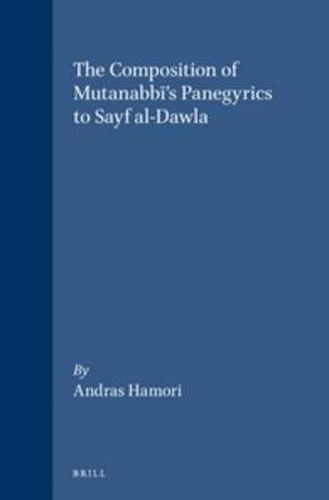Readings Newsletter
Become a Readings Member to make your shopping experience even easier.
Sign in or sign up for free!
You’re not far away from qualifying for FREE standard shipping within Australia
You’ve qualified for FREE standard shipping within Australia
The cart is loading…






The purpose of this study is to identify and describe recurrent patterns of composition in the 22 major panegyrics Mutanabbi wrote to Sayf al-Dawla during his stay at the Hamdanid court in Aleppo between 337/948 and 345/956. It discusses the types of utterance used in endings and in cadential lines before definable internal boundaries, the organizing conventions of the passages that lead into and out of chronicles of military campaigns, the non-random placement of certain crescendo motifs, various means of local organization in poems without events, etc. It also considers brief differences in technique between the Aleppo period and Mutanabbi’s earlier and later work, and casts a glance at possible predecessors. Based on a sizable and coherent sample of poetry, this study demonstrates that compositional rules and predilections played a pervasive role in Mutanabbi’s writing in the years when his career was at its height.
$9.00 standard shipping within Australia
FREE standard shipping within Australia for orders over $100.00
Express & International shipping calculated at checkout
The purpose of this study is to identify and describe recurrent patterns of composition in the 22 major panegyrics Mutanabbi wrote to Sayf al-Dawla during his stay at the Hamdanid court in Aleppo between 337/948 and 345/956. It discusses the types of utterance used in endings and in cadential lines before definable internal boundaries, the organizing conventions of the passages that lead into and out of chronicles of military campaigns, the non-random placement of certain crescendo motifs, various means of local organization in poems without events, etc. It also considers brief differences in technique between the Aleppo period and Mutanabbi’s earlier and later work, and casts a glance at possible predecessors. Based on a sizable and coherent sample of poetry, this study demonstrates that compositional rules and predilections played a pervasive role in Mutanabbi’s writing in the years when his career was at its height.